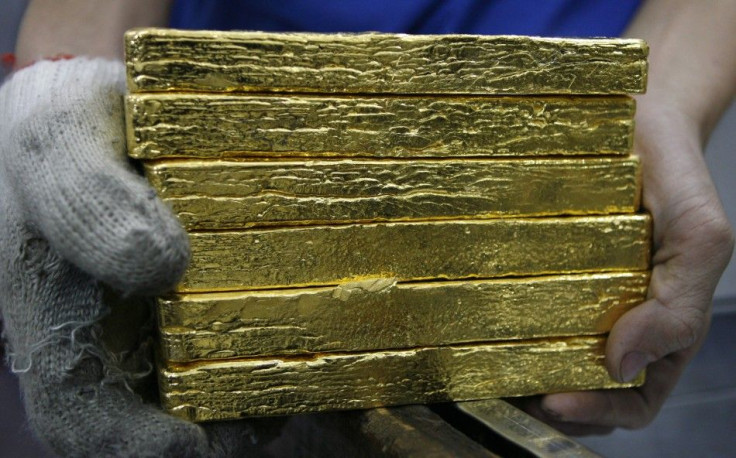Gold ETF Inflows Down in '11 - Report

(REUTERS) -- The inflows into gold-backed exchange-traded funds that helped drive bullion demand sharply higher during the financial crisis have more than halved this year, according to Reuters data, and are unlikely to recover in 2012 as appetite grows for other assets.
Sales of products such as physical bars and coins are likely to firmly underpin gold demand, but while heavy ETF selling is unlikely while physical gold is still seen as a good store of wealth, analysts say fresh buying is likely to be sluggish.
Reuters data showed inflows of 4.34 million ounces into the eight products it monitors this year to Dec. 21, well short of the 9.9 million ounces recorded in the previous full year.
Investor interest seems to be maturing, so you're not seeing such strong flows into the physically backed ETF. We're seeing more interest materialising now into, say, allocated bars, said Barclays Capital analyst Suki Cooper.
ETFs issue securities backed with physical metal, giving investors exposure to the underlying asset price without having to buy, store and insure it. They proved a popular way to invest in gold after the credit crisis lifted interest in physical metal as a haven from risk.
This year, inflows have been directed more to smaller products, chiefly in Europe, whose holdings have grown. The largest U.S.-based SPDR fund in on track for a net annual outflow, currently 413,000 ounces.
Holdings of Swiss & Global Asset Management's JB Physical Gold Fund have risen 661,000 ounces; Zurich Kantonalbank's ZKB Physical Gold fund is up 1.1 million ounces; and ETF Securities' ETFS Physical Gold is up 192,000 ounces.
It's interesting that we've seen this divergence in flows, says Cooper. Whereas in the past, they've been driven by interest in the United States, this year the strong flows have materialised in Europe, which isn't that surprising given everything going on (with the euro zone debt crisis).
A smaller U.S.-based product, the iShares Gold Trust, has seen a 1.8 million ounce increase in its holdings this year.
Gold is having to compete for attention with other assets, which after years of volatility are looking more attractive.
Asset managers at the Reuters 2012 Investment Outlook Summit earlier this month predicted a stock market recovery next year, saying this year's euro zone crisis had put equity valuations in compelling territory.
In 2012 one of the headwinds for the ETFs will be rotation back into gold equities and other asset classes if they look attractive, said RBS Global Banking & Markets analyst Nick Moore.
Gold is money and money is cash, so owning the ETF allowed people a way of being in quasi-cash. The default option was gold, but now value has been exposed in many other asset classes.
HAVEN APPEAL HURT
At the same time, gold's volatility this year, which has seen it trade in an unprecedented $500 range, has hurt its safe-haven appeal. A UBS official said in a letter this month that gold no longer offered a haven from the euro zone debt crisis.
Gold prices have been moving so violently that its safe-haven, store-of-wealth status has been dented somewhat, said VM Group analyst Carl Firman. I think you have seen some of the more nervous investors in the ETFs pull out because of that.
But while inflows have slackened, ETFs have not seen the significant liquidation that, at the time of their launch, some analysts had feared could threaten market stability.
The SPDR fund, launched in 2004, is one of the world's largest bullion holders, with more gold in its vaults than the central banks of Switzerland, Russia and Japan.
Analysts say speculative investors who bought ETFs in anticipation of higher metal prices are now already likely to have sold them. Their overall 'stickiness', even when prices were falling, suggests most bought for portfolio diversification and as a long-term store of value rather than profit.
Liquidation from ETFs does not necessarily reflect a broad-based change of sentiment towards gold, said Anne-Laure Tremblay, an analyst from BNP Paribas. Rather, sellers were being forced to sell metal to cover losses elsewhere, she said.
Despite annualised outflows, interest in the SPDR recovered in the fourth quarter. The 48-tonne rise in its holdings in that period came despite gold prices putting in their worst quarterly performance in more than three years.
© Copyright Thomson Reuters 2024. All rights reserved.






















